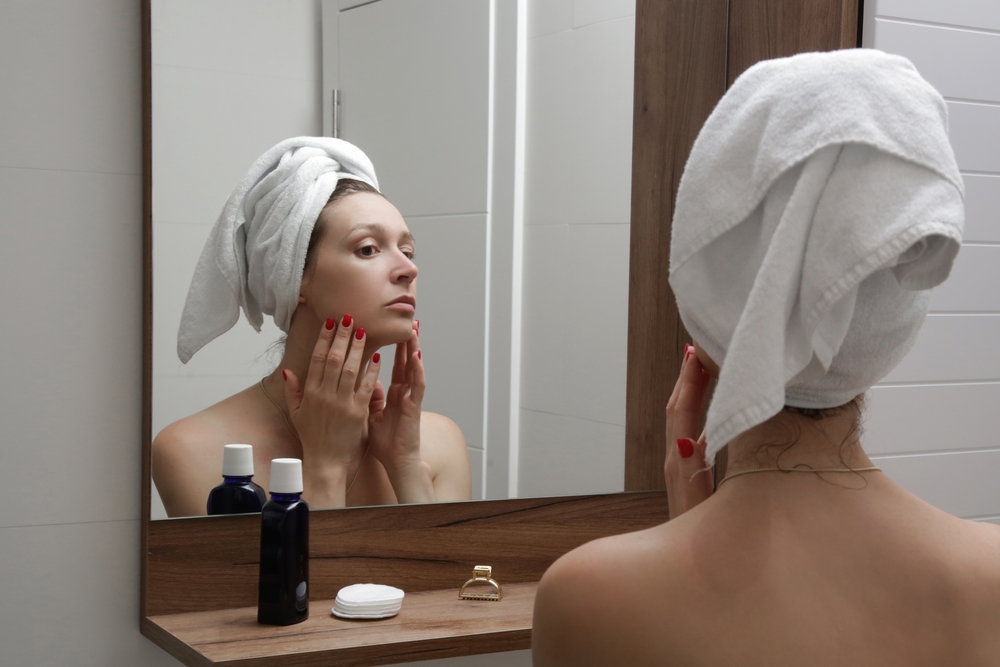As you grow up, you might have heard that you shouldn’t focus on the outside, because it’s what is on the inside that really matters. It is true, it’s way more important to focus on the inside, but we shouldn’t forget how important self-care is, too.
By self-care, I’m talking about inside and OUTSIDE care. Let’s take your skin, for example. Even if nowadays technology has become SO advanced, many people still don’t know how to take care of their skin.
As Lisa Moskovitz, RD, CDN, and the CEO of New York Nutrition Group explained, “when it comes to skin and the surface of the skin, people might still think they have to treat it with topical ointments.”
Because, in reality, it’s the diet that makes a ground-breaking change in the levels of varying hormones in the body, and the hormones regulate natural processes that happen within the body.
This basically implies that the health and appearance of the skin are directly related to hormone fluctuations that might be influenced by diet. Given all this, it’s worth looking into the matter more profoundly. Let’s see what you should and shouldn’t eat, depending on your skin type!

What’s your skin type?
Before hitting the grocery stores, you must know what skin type you have. Experts would suggest you avoid using various products after cleaning your skin, only to take note of how it looks after a couple of hours.
There are a couple of clues that might help you understand what type of skin you have. Usually, the main skin types are four: dry, normal, oily, and combination skin. Naturally, in some of these skin types, you might have to deal with other issues, such as acne, flaking, and dullness. Here are some indications that you need to take into consideration:
- if your skin is shiny, you might have oily skin
- if it’s flaky, red, or often irritates, then you have dry skin
- oily in some areas (usually the T-zone), and dry in others, then we’re talking about combination skin
Best diet when you have dry skin
If your skin is dry, then it’s probably thirsty. When it comes to dry skin, Moskovitz says that “we should think about hydration.” Drinking a minimum of 2 liters of water on a daily basis might help.
If you feel like it’s too much for you to drink, you can also get hydrated through fruits, such as watermelon. Experts also suggest you to hydrate your skin through fatty acids, which you can find in avocado, olive oil, and salmon.
Also, when it comes to hydration, you might want to reconsider the intake of dehydrating foods and beverages to the minimum. Because, as Moskovitz explained, excess caffeine and alcohol might dry you even more.”
Naturally, everyone has different levels of tolerance, but she would generally suggest limiting yourself to only 400 milligrams of caffeine a day, which is around two to three 8-ounce cups of coffee.
Also, when it comes to alcohol, the best guidance you could follow is the one provided by the Centers for Disease Control and Prevention, also known as CDC. However, it seems that dry skin isn’t only a product of dehydration.
“Deficiencies in vitamins A and C might contribute to dry skin, so when that’s the case, you could easily fix that by increasing the intake of spinach, broccoli, and sweet potatoes.”

Best and worst foods you could eat when you have oily skin
Moskovitz agreed that it is extremely common to rush into prohibiting oil from your diet, especially if you have oily skin. However, that’s not always the best approach. “People assume that oil must create even more oil,” she added. “In fact, anti-inflammatory oils might reduce it.”
Some foods with anti-inflammatory benefits are avocado, olives, fish, and flaxseeds. Even so, Moskovitz advised her clients to limit their oily, ultra-processed foods intake, like fries, but also to keep their sugar intake to a minimum (below 10% per day).
It might not seem like it’s a lot, but just a couple of swaps in your diet might, in fact, go a very long way when it comes to controlling oily skin. “Avoiding overproduction of sebum and combatting clogged pores can be easily done simply by substituting refined carbs with wheat grains and choosing poultry or fish instead of fatty meats,” Green added.
Best and worst foods you could eat when you have combination skin
Given that combination skin is basically a mix of dry and oily, Moskovitz mentioned that integrating the meal plans for both of these types is a good start. People with combination skin won’t be required to completely give up on carbs.
However, Green said that it’s mandatory to pay attention to which types of grains and wheat you’re eating. Carbs are known to cause inflammation and might throw off the delicate balance of someone that has combination skin.
So if you want to change something in your diet, you might want to consider choosing carbs that are at least high in protein and low-glycemic, like brown rice and quinoa.

Best and worst foods you could eat when you have acne-prone skin
Even if acne is often associated with teenage issues, it’s not necessarily so. The American Academy of Dermatology Association defined “adult-onset acne” as acne that you have for the first time as an individual when you reach adult age.
Menopause is one of the most common culprits. Moskovitz explained that this is basically “a combination of oiliness, inflammation, and bacteria.” She also advised everyone who is currently dealing with acne to focus on getting micronutrients, rather than just follow a diet plan for oily skin type. “Try getting a lot of vitamin C, by eating many berries and other fruits rich in vitamin C.
Also, zinc can turn out to be extremely helpful when it comes to acne, and you might even find it in shellfish and lean animal protein, like chicken.” There are also various plant-based sources of zinc in different foods, like fortified cereals and pumpkin seeds.
Some people discovered that cutting back on dairy, sugary and fatty foods proved to be extremely helpful, too. “These foods are known to cause inflammation in the skin, but also spikes in the hormones that regulate sebum production.
Also, an increase in the amount of sebum produced is directly linked to blockage of sebaceous glands, but also the development of acne.” as Moskovitz explained. She also added that probiotics, such as those that you find in Greek yogurt, for example, might actually help acne.
That’s why it’s so important to speak with your doctor or even your dietician, so you can know exactly which foods to eliminate.
Best and worst foods to eat when you have dull skin
Experts put an emphasis on the fact that tanning is definitely not a safe way to get that beautiful, glowing skin, because medically speaking, it’s only a form of sun damage. However, adding some foods to your diet might prove to be helpful in achieving a sun-kissed look throughout the whole year. Moskovitz also mentioned that dull skin might be caused by oxidative stress from the environment you live in, but also by exposure to pollutants and pesticides.
“It’s important to keep ourselves as far away as possible from oxidative stress from our environments, and one way to do that is through antioxidants.” And when it comes to antioxidants, you have to try a particular micro-nutrient, known as lycopene.
You won’t find it in sandwiches and burgers, unfortunately. Lycopene is in tomatoes, guava, papayas, and red peppers. Luckily, there might be some guilty pleasures on the table, like red wine and chocolate.
“Cocoa is a great source of antioxidants. So go ahead and eat dark chocolate (over 75%), because all the other types have more sugar than cocoa.”

Best and worst foods to eat when you have mature-looking skin
It’s highly important to keep in mind that, no matter your choices, your skin will eventually age. But you could also reach for collagen-rich food, to help slow down the process a little bit. “Collagen is a protein that our bodies make naturally.
It’s basically the glue that holds our bodies together. Unfortunately, we start losing the collagen as early as our 20s.” But you can recharge the collagen with a couple of protein-rich foods, such as eggs, fish, and lean meats.
Also, vitamin C helps the body absorb more collagen. Green recommends limiting the salty foods intake, such as fries and chips, because they can dehydrate your skin. “When mature skin dehydrates, fine lines and wrinkles might appear even more pronounced. Some foods won’t do anything but draw moisture out of the skin, which makes it become drier and emphasizes fine lines and wrinkles.”
The other worst thing you could do is not eat enough. Your skin needs protein and fat to remain plump.
If you enjoyed reading this article, we also recommend reading: You Won’t Want to Skip These 3 Mini Thanksgiving Desserts








